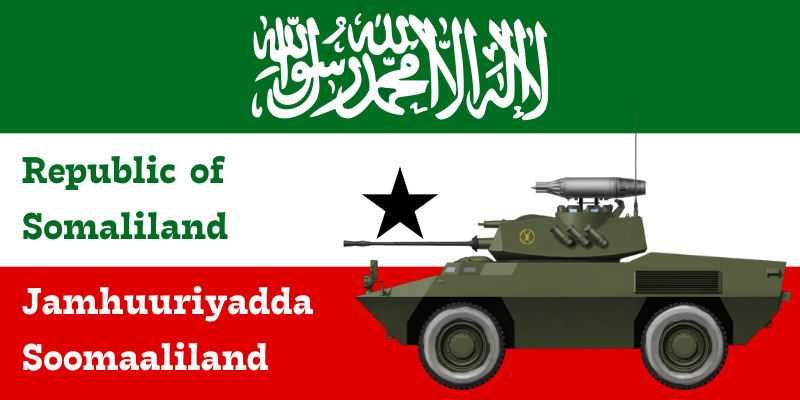Vehicles
The Republic of Somaliland is a breakaway state which unanimously declared independence from Somalia in May 1991, matching the territory of the former British Somalia. The impetus behind Somaliland’s independence from Somalia can largely be found in the policies of Siad Barre. The military dictator of Somalia from 1969 to January 1991, Barre’s regime was increasingly repressive particularly in the 1980s and viewed Somaliland as a hotbed for support for a major opposition group, the Somali National Movement (SNM).
Barre engaged in an extremely violent repression of opposition in the 1980s. This culminated into an indiscriminate bombardment of Hargeisa, as well as the second city in Somaliland, Burao, in early 1988, followed by a ground offensive on the two cities in May 1988. From 1987 to 1989, the Barre regime engaged in violent reprisals against the Isaaq population (a clan which forms around 80% of Somaliland’s population), in what has very often being referred to as a genocide. More than 90% of Hargeisa and 70% of Burao were destroyed, and tens of thousands of civilians were killed (estimates generally ranging from 50,000 to 200,000 dead, with the 1997 population of Somaliland estimated to be around 2 million). Furthermore, 400,000 residents of Somaliland are estimated to have fled into Ethiopia, and another 400,000 to have been internally displaced within Somalia.
In January 1991, after years of intensification of ethnic tensions, Somalia broke into civil war as Barre fled the country. Somaliland took advantage of the situation to declare independence. The exact objective of Somaliland in the long-term has varied. Originally, Somaliland officials seem to have preferred Somaliland to be part of a federal Somali state, but it appears that over the years, with Somalia proving unable to re-establish a functional state, recognition of Somaliland as an independent, separate state has become the objective instead. Perhaps more importantly, Somaliland officials have tried to prevent Somaliland from being involved in the Somali civil war and see the collapse of civil order. Though Somaliland has occasionally had border conflicts, notably with the autonomous Somali province of Puntland to the east, this has still largely been a success, with Somaliland being able to govern its territory and exercise a state monopoly on violence. The country has made significant efforts to establish democratic institutions. This has not been without struggles, with elections often delayed due to complications and struggle to organize them. Notably, after a first multi-party presidential election in 2003, the next presidential election was supposed to happen in 2008 but ended up taking place in 2010. Similarly, the first multi-party parliamentary election took place in 2005, and the second only in 2021. However, the elections themselves have generally been considered free and fair by international observers.
As of 2024, Somaliland is not recognized by any UN member state, though this is potentially slated to change in the future. In a memorandum signed with Ethiopia in January 2024, Somaliland agreed to lease the port of Berbera to landlocked Ethiopia for 20 years, in exchange for eventual recognition of Somaliland and a stake for the country in Ethiopia Airlines. Though unrecognized by any other UN state, Somaliland has still pursued a number of diplomatic endeavors, notably with its former colonizer the United Kingdom, Djibouti, South Africa, as well as the African Union and European Union. Some of the country’s relations have been more unexpected, notably the establishment of formal diplomatic relations with the Republic of China/Taiwan.
Militarily, Somaliland’s army has been generally unable to acquire foreign gear due to being an unrecognized breakaway state. In terms of armored fighting vehicles, Somaliland therefore operates vehicles taken from local Somali Army garrisons at the country’s independence. This notably includes T-55s tanks, as well as Italian Fiat 6616 armored cars and 6614 light armored personnel carriers. Outside of these surplus armored fighting vehicles, technicals have broadly been seen in use, likely being the only way Somaliland can currently create a combat vehicle.

